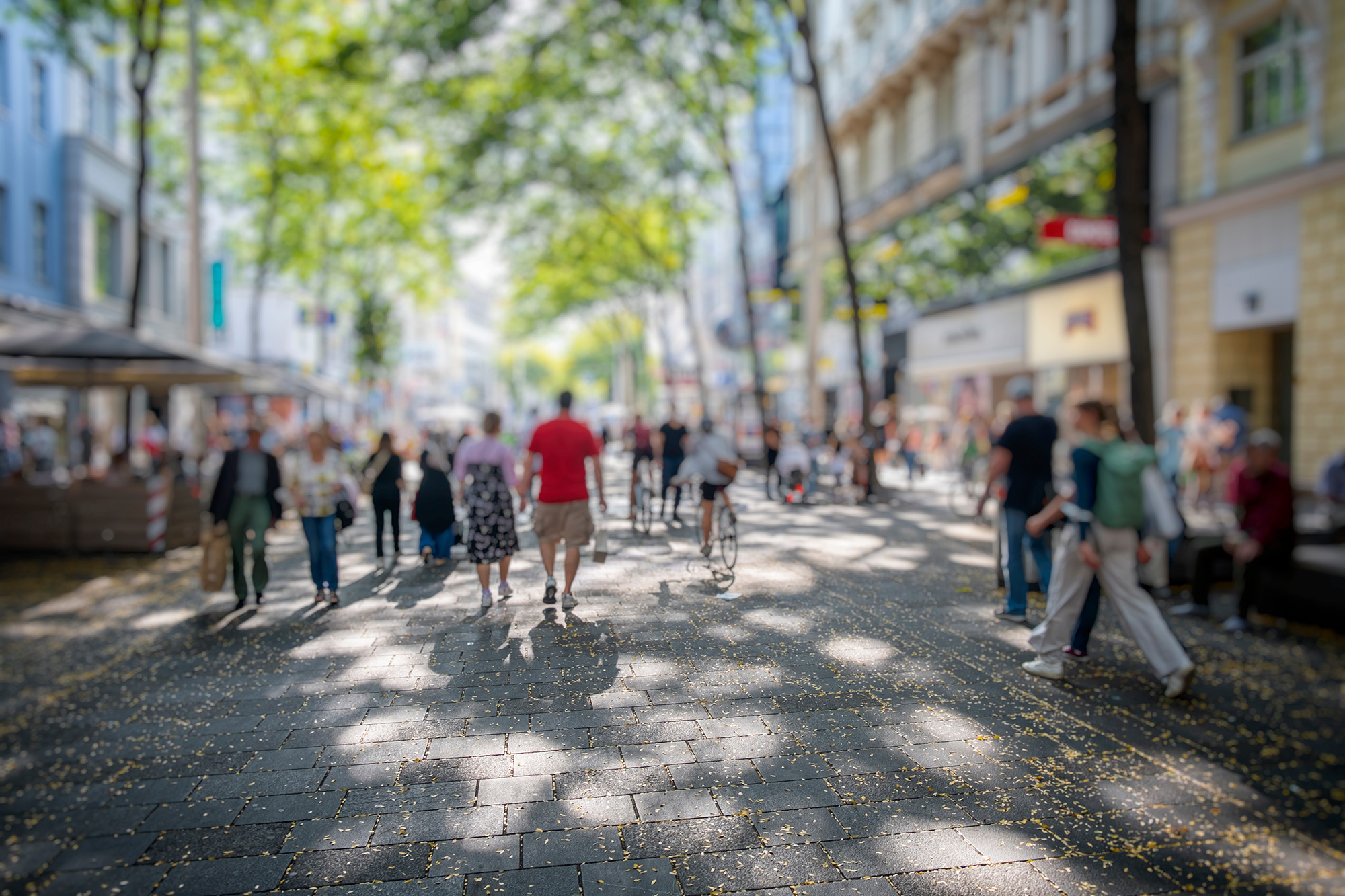
Just take a moment to imagine what that would really be like.
That’s the premise behind the 15-minute city (or neighbourhood, depending on your context): designing places where people actually want to be.
It’s a concept that’s generated a lot of buzz and a fair bit of confusion. In some circles the name is being dropped in favour of “low traffic neighbourhoods”. But beneath the noise lies a simple, but powerful vision: creating more liveable, walkable, people-friendly places.
And at its core, that’s something we can all get behind.
If there’s just one thing we want to make clear in this blog it’s this: the 15-minute city is not about restriction. It’s about choice.
It’s designing places that give people the option to meet more of their daily needs close to home, so they can choose to walk or use public transport rather than having to drive. And it’s about creating town centres and neighbourhoods that are genuinely worth spending time in.
What if, within a 15-minute walk from your house, you could access:
The concept was popularised by Professor Carlos Moreno, but its roots go back much further to the Garden City movement, urban villages, andJane Jacobs’ call for vibrant, mixed-use, walkable neighbourhoods. All share a common thread: the idea that cities should be shaped around human needs, not just transport networks or land values.
Moreno points out the obvious: proximity plays an essential role in the lifestyle change that’s needed to transition away from an overrelianceon the car.

A 15-minute neighbourhood isn’t simply about what’s “inside the circle”, though. It’s how those things connect and how easy it is to navigate. Can everyone – from a teenager on a bike to an older person with a walking frame – move around with confidence? Are everyone’s needs met?
It’s also about how it feels to walk it. It should be intuitive, welcoming, inclusive and safe. It should be easy to get where you need to go—and even easier to want to stay longer when you get there.
That’s where good wayfinding comes in.

Town centres have been undergoing a slow transformation for years. The rise in flexible working means fewer daily commutes. Retail is no longer the anchor it once was. Rather than mourning the past, we must rethink what our town centres are for and capitalise on the opportunities they present.
Increasingly, people want their local area to be more than functional—they want an experience; places to connect, explore, socialise and recharge. That means more independent businesses, more arts and culture, more opportunities for meanwhile uses and, of course, better public realm.
Crucially, to make this a positive experience, town centres need to be places they can get to easily and enjoy on foot. Wayfinding plays a big part in helping people discover what’s on their doorstep and encouraging exploration further afield.
Urban densification and the 15-minute model can:
If we’re not careful, 15-minute neighbourhoods risk becomingexclusive bubbles, only available to those who can afford them. We can’t letthe idea become a postcode lottery, where some areas thrive while others areleft behind. Many lower-paid workers can’t afford to live 15 minutes from theirjob. And not everyone wants to, either.
We must be careful not to design places that limitopportunity in the name of proximity. The goal is giving people the choice tostay local when they want to – without sacrificing access, opportunity ordiversity.

Retrofitting existing towns and cities won’t be easy. Our car-dominant infrastructure is so ingrained in our towns and cities that creating a lifestyle change won’t happen overnight.
Incremental, coordinated change to achieve better walkability is the way forward.
So let’s stay grounded in what matters. We’re not building a utopia. We’re designing real places, grounded in communities, creating better everyday experiences for real people.
That means:
At Placemarque, we believe in designing places where people want to be.
The 15-minute city is just one tool to help make that happen. If we keep the focus on people, rather than the terminology, we’ll be well on our way.
We help our clients create better places by becoming the voice of the user on the design team. If you’d like to explore how we can help bring your place to life, contact us today.